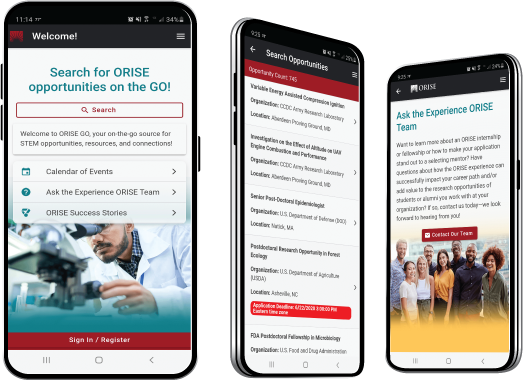Emanations Simulation for Secure Facility Design and Construction
Create and release your Profile on Zintellect – Postdoctoral applicants must create an account and complete a profile in the on-line application system. Please note: your resume/CV may not exceed 3 pages.
Complete your application – Enter the rest of the information required for the IC Postdoc Program Research Opportunity. The application itself contains detailed instructions for each one of these components: availability, citizenship, transcripts, dissertation abstract, publication and presentation plan, and information about your Research Advisor co-applicant.
Additional information about the IC Postdoctoral Research Fellowship Program is available on the program website located at: https://orise.orau.gov/icpostdoc/index.html.
If you have questions, send an email to ICPostdoc@orau.org. Please include the reference code for this opportunity in your email.
Research Topic Description, including Problem Statement:
A physics-based simulation of the electromagnetic presentation of an office building, office rooms or other facility provides security insight with respect to radio frequency (RF) emanations. While limited models exist, this Topic investigates realistic in situ simulation. That is, for an entire building or facility, an emanation simulation with potentially hundreds of specific emanations in a noisy (external) emanation context. For example, a secure facility in an office building in a built-up area, such as a central business district.
The simulation should incorporate real-world measurements of; the physical properties of the facility, electrical, mechanical and information systems within the building, external sources of electromagnetic energy, and any other relevant factors affecting emanations security.
The simulation should provide methods, tools or techniques to model a range of TEMPEST (https://www.cyber.gov .au/glossary/tempest) and other technical attack vectors.
Example Approaches:
RF simulation software exists at small-scale for use in electrical and mechanical systems. This software is unable to model the number and scale of objects and interactions at the scale of a building in a noisy environment. Similarly, wide-area RF modeling software used in the power and telecommunications industries does not allow for simulation of numerous small devices inside of a physical structure. The future of Internet of Things technologies, urban Wi-Fi standards, and proliferation of interconnected devices, adds complexity to emanations security challenge.
One approach would be to integrate current models and approaches. Another would be to forecast near term facility RF characteristics and develop a simulation in response to likely developments
Relevance to the Intelligence Community:
The intent is to develop simulation tool, model or technique that could produce a realistic 'digital twin' of a facility that allows for more accurate modeling of complex emanations security threat scenarios. The current limitations of such insights, before construction or verification stages, limits secure facility development and maintenance.
References:
- R. Groot, D. van Meeteren and F. Leferink, (2023) ‘TEMPEST Demo for Increasing Awareness’, 2023 International Symposium on Electromagnetic Compatibility – EMC Europe, doi: 10.1109/EMCEurope57790.2023.10274402.
Key Words: Emanations Security, Electromagnetic Interference, EMSEC, EMI, TEMPEST, RF modeling, simulation, digital twin.
Postdoc Eligibility
- U.S. citizens only
- Ph.D. in a relevant field must be completed before beginning the appointment and within five years of the appointment start date
- Proposal must be associated with an accredited U.S. university, college, or U.S. government laboratory
- Eligible candidates may only receive one award from the IC Postdoctoral Research Fellowship Program
Research Advisor Eligibility
- Must be an employee of an accredited U.S. university, college or U.S. government laboratory
- Are not required to be U.S. citizens
- Citizenship: U.S. Citizen Only
- Degree: Doctoral Degree.
-
Discipline(s):
- Chemistry and Materials Sciences (12 )
- Communications and Graphics Design (3 )
- Computer, Information, and Data Sciences (17 )
- Earth and Geosciences (21 )
- Engineering (27 )
- Environmental and Marine Sciences (14 )
- Life Health and Medical Sciences (45 )
- Mathematics and Statistics (11 )
- Other Non-Science & Engineering (2 )
- Physics (16 )
- Science & Engineering-related (1 )
- Social and Behavioral Sciences (30 )

 ORISE GO
ORISE GO

The ORISE GO mobile app helps you stay engaged, connected and informed during your ORISE experience – from application, to offer, through your appointment and even as an ORISE alum!





